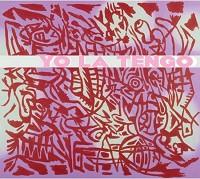Veteran Alt Rock Group Delivers Eclectic Mix
It’s not often that a rock band remains together for more than 20 years and releases consistently swell records along the way, but Yo La Tengo has managed to do that, in part because Ira Kaplan and Georgia Hubley have beat the odds twice: managing to stay together throughout both as bandmates and husband and wife.
The latest double LP (issued last September 2006, sorry we’re so slow) is yet another example of the thoughtful group’s eclectic and excellent tastes and influences as well as its creativity and wide ranging abilities and let’s not leave out its well-considered sonics as Yo La Tengo albums (around a dozen of them) almost always sound good in that tingly analog way however they’re recorded.
The album begins with a long, repetitive, but rhythmically enticing drone by way of “Tomorrow Never Knows” and “Eight Miles High” that captivates despite its seeming familiarity. Then it’s on to “Beanbag Chair,” a song that could have come from The Brill Building in its heyday, or from Boyce-Hart or The Turtles, and so it goes on this eclectic, action packed double LP that also manages an extended Eno-like soundscape complete with sound effects (“Daphnia”), the 12 string punctuated, Byrds-like “The Race Is On Again,” a Carnaby Street romp (“I Should Have Known Better”) complete with mid-sixties style compression and Farfisa (or Farfisa-like) organ, which they follow with a Move-like romp with Yardbirds overtones (“Watch Out For Me Ronnie”) and so on. Lounge-y, pop-y, experimentally minimalistic, this double LP delightfully covers the musical waterfront as only a group of experienced but still vital and growing music veterans can.
None of this is imitative, however, it’s merely pleasingly reminiscent. What’s more, these folks are utterly skilled at creation, not re-creation, so it all sounds fresh and inspired even as it bounds along the grooves of favorite and familiar genres. Plus the production is spectacularly rich, natural, three dimensional and analog-like when appropriate. When you get to “Song For Mahilia” or if you start there (side 4) you will be treated to three dimensia, the likes of which you probably thought had disappeared with the advent of Dynaflex.
Music is to be played and Yo La Tengo knows how to play it and play with it, taking advantage of an encyclopedic knowledge base that encompasses both the music and the musical and production techniques needed to summon up familiar and long forgotten sounds in the service of music that’s remarkably fresh.
The long final song, “The Story of Yo La Tango,” is obviously a joke aimed at the frequency misspellings found in the press. The group’s real name properly spelled means “I’ve got it” in Spanish, named, it’s said, for a baseball incident (Mr. Kaplan is a fan) involving a New York Mets game collision between two players, one of whom only spoke Spanish and didn’t understand when another player yelled “I’ve Got It.”




